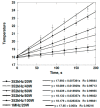Sonochemical Degradation of Benzothiophene (BT) in Deionized Water, Natural Water and Sea Water
- PMID: 30641947
- PMCID: PMC6359156
- DOI: 10.3390/molecules24020257
Sonochemical Degradation of Benzothiophene (BT) in Deionized Water, Natural Water and Sea Water
Abstract
This paper deals with the sonochemical water treatment of polycyclic aromatic sulfur hydrocarbons (PASHs), one of the most common impurities found in waste water coming from petroleum industry. The best fit of the experimental data appears to be the kinetic parameters determined using the Michaelis-Mentonmodel in the concentrations range of the study. For the initial increase in the degradation rates, it is simply considered that the more the bulk concentration increases, the more the concentration in the interfacial region increases. This will be explained by Michaelis-Menton kinetics. The influence of organic compounds in the water matrix as a mixture with Benzothiophene (BT) was also evaluated. The results indicated that BT degradation is unaffected by the presence of bisphenol A (BPA). Finally, the results indicated that ultrasonic action is involved in oxidation rather than pyrolitic processing in the BT sonochemical degradation.
Keywords: advanced oxidation processes; benzothiophene; sonochemical degradation; water treatment.
Conflict of interest statement
The authors declare no conflict of interest.
Figures











References
-
- Swartz C.D., King L.C., Nesnow S., Umbach D.M., Kumar S., deMarini D., Mutagenicity M. Stable DNA adducts, and a basic sites induced in Salmonella by phenanthro[3-4-b]- andphenanthro[4,3-b]thiophenes, sulfur analogs of benzo[c]phenanthrene. Mutat. Res. 2009;661:47–56. doi: 10.1016/j.mrfmmm.2008.11.001. - DOI - PMC - PubMed
-
- Glaze W., Kang J.-W., Chapin D.H. The Chemistry of Water Treatment Processes Involving Ozone, Hydrogen Peroxide and Ultraviolet Radiation. Ozone-Sci. Eng. 1987;9:335–352. doi: 10.1080/01919518708552148. - DOI
-
- Parsons S.A., Williams M. Introduction. In: Parsons S., editor. Advanced Oxidation Processes for Water and Wastewater Treatment. Volume 4. IWA Publishing; Alliance House, London, UK: 2004. pp. 1–6. - DOI
-
- Colarusso P., Serpone N. Sonochemistry II—Effects of ultrasounds onhomogeneouschemical reactions and in environmental detoxification. Res. Chem. Intermed. 1996;22:61–89. doi: 10.1163/156856796X00386. - DOI
MeSH terms
Substances
LinkOut - more resources
Full Text Sources

